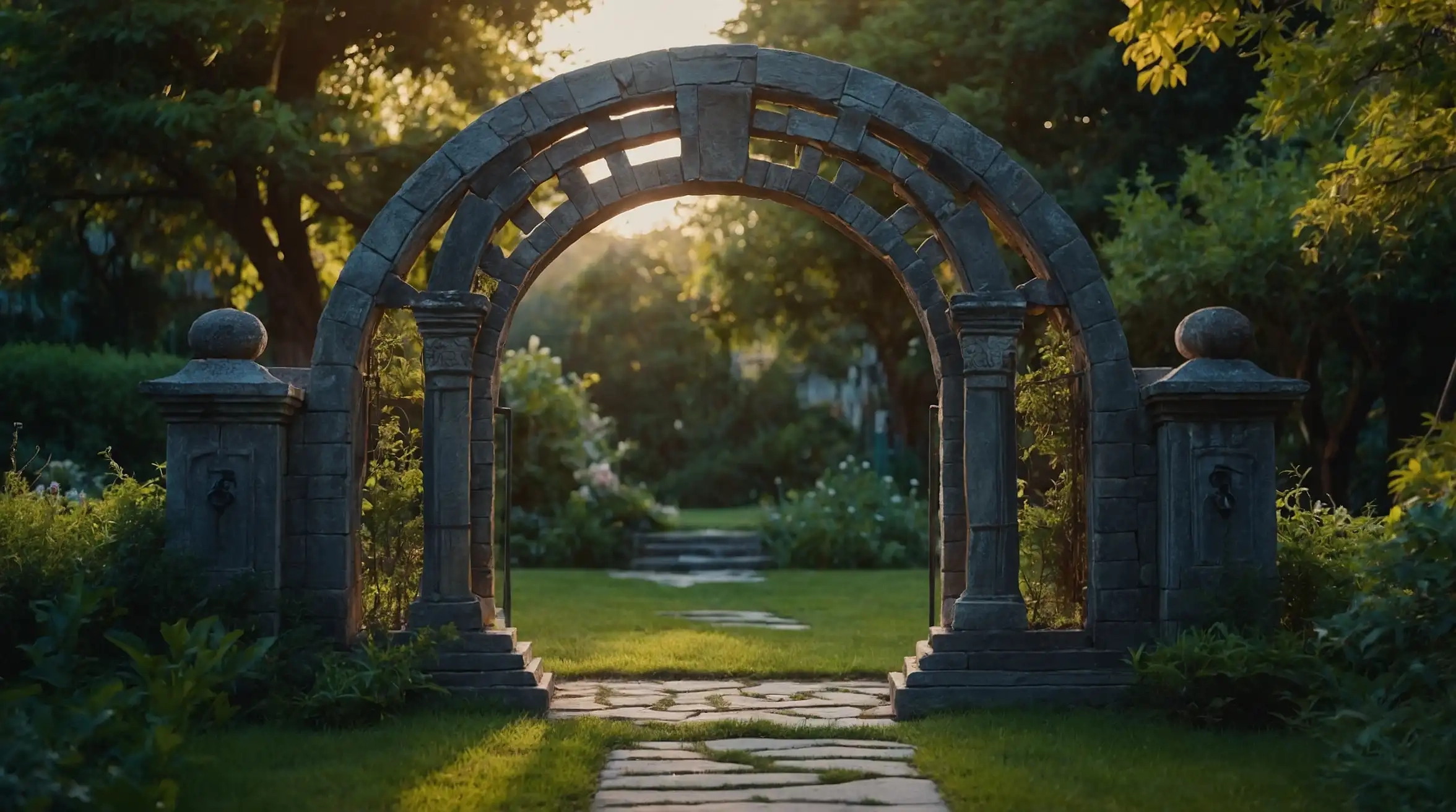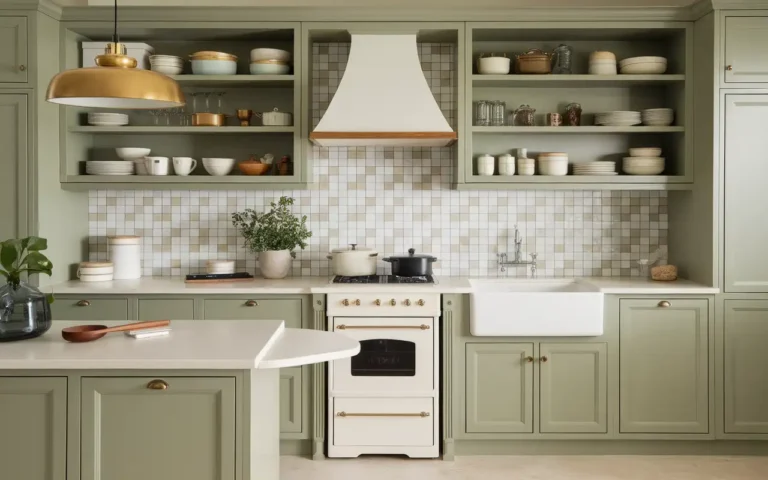35 Enchanting Moon Gate Ideas to Transform Your Garden
Moon gates create magical circular portals that instantly elevate any garden from ordinary to extraordinary.
These perfectly round openings serve as symbolic thresholds between different spaces while adding architectural interest and focal points.
Originally from ancient Chinese gardens, moon gates have evolved across cultures to represent wholeness, renewal, and passage.
Their perfect circular form creates a meditative frame through which to view other parts of your landscape.
With materials ranging from traditional stone to contemporary metals, you can customize a moon gate to complement any garden style.
These 35 ideas will inspire you to create your own enchanting garden portal.
1: Classic Stone Moon Gate
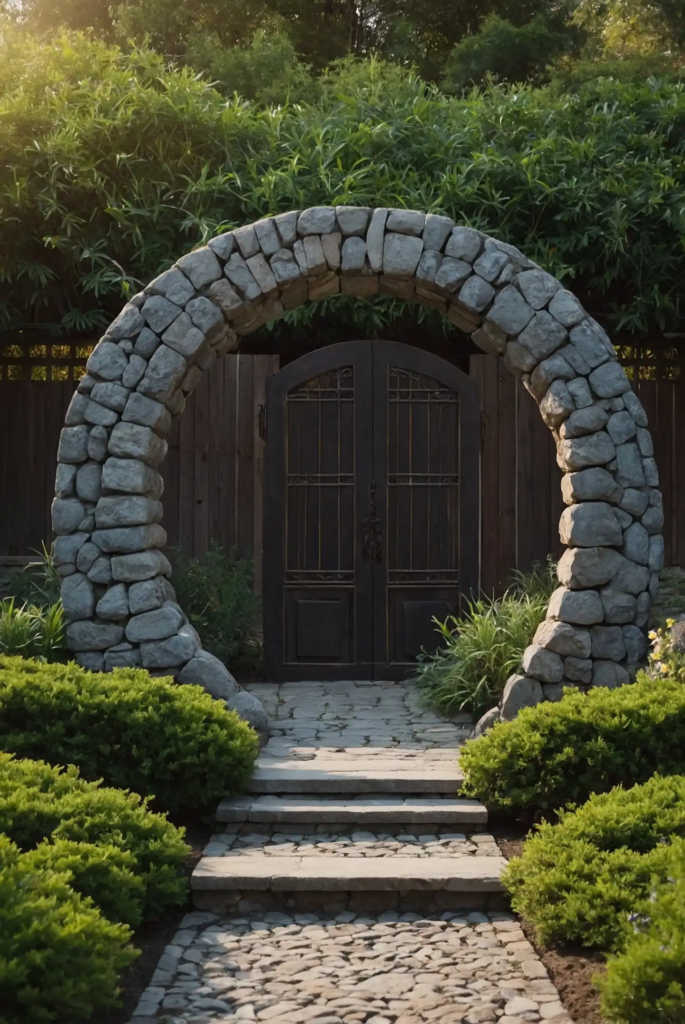
Build a traditional moon gate using natural stones stacked and mortared into a perfect circle.
This timeless design creates a substantial, permanent structure with old-world charm.
Choose locally sourced stone that complements your region’s landscape.
Consider how the stones’ colors will enhance surrounding plantings and hardscaping.
The substantial presence of stone provides weight and permanence, signaling an important transition in your garden journey.
2: Living Willow Moon Gate
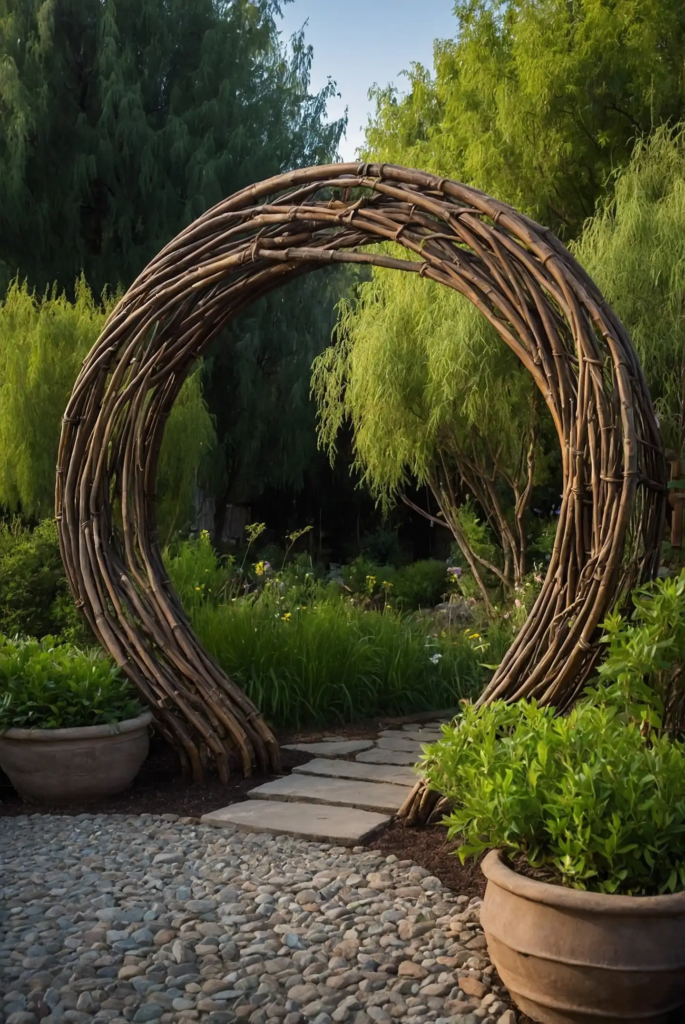
Weave flexible willow branches into a circular framework that will root and grow over time.
This living architecture creates a dynamic moon gate that changes with the seasons.
Plant dormant willow rods in late winter, training them along a circular template.
Prune regularly to maintain the circular shape as the structure develops.
This organic approach creates a moon gate that literally comes alive, with spring catkins, summer foliage, and elegant winter branches.
3: Rusted Corten Steel Ring

Install a precision-cut circular frame in weathering steel that develops a beautiful rusty patina over time.
This contemporary approach combines industrial materials with organic forms.
Select a substantial thickness for structural integrity and visual weight.
The warm rust tones will complement both garden greenery and other hardscape elements.
This low-maintenance option provides immediate impact while developing character as it ages in your garden.
4: Timber Frame Construction
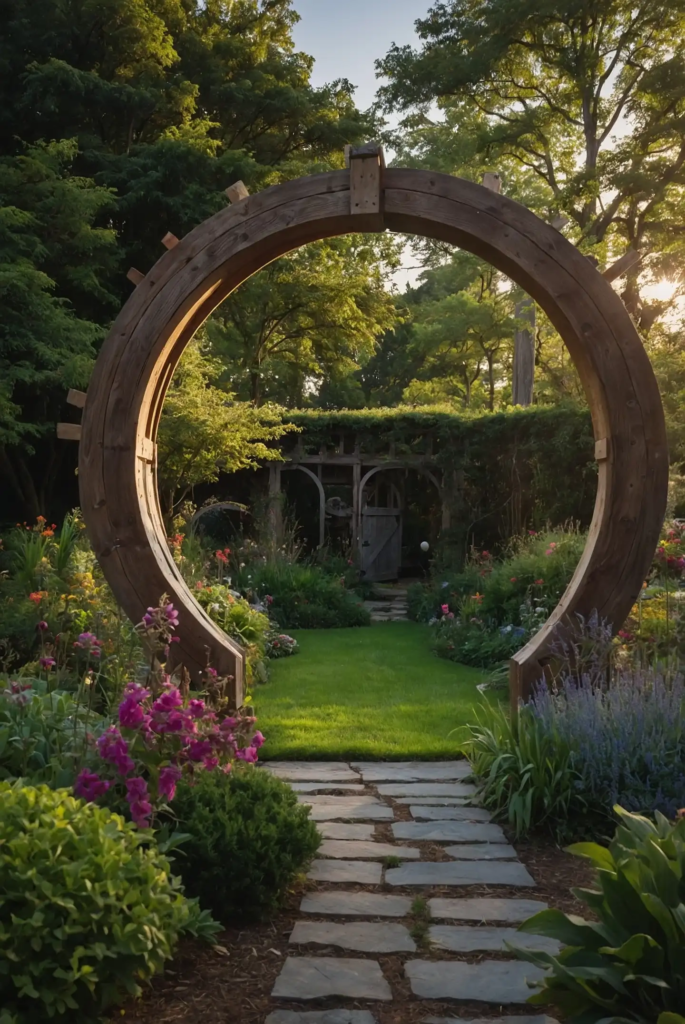
Craft a wooden moon gate using curved timber sections joined with traditional woodworking techniques.
This approach works beautifully in cottage and woodland gardens.
Choose naturally rot-resistant woods like cedar, redwood, or locust. Apply a protective finish or allow the wood to weather naturally to a silver-gray.
The warmth and craftsmanship of wood creates an inviting threshold that feels both substantial and approachable.
5: Bamboo Circular Entrance

Create an Asian-inspired moon gate by bending and securing bamboo poles into a perfect circle.
This lightweight option brings exotic flair to your garden transitions.
Use substantial-diameter bamboo for the main structure with smaller pieces for cross supports.
Secure joints with natural twine or concealed wire for an authentic look.
This approach references traditional Japanese garden elements while providing a sustainable, rapidly renewable material option.
6: Climbing Rose Archway

Train climbing roses over a circular metal framework to create a living moon gate bursting with color and fragrance.
This romantic version combines structure and lush plantings.
Choose repeat-blooming varieties for extended seasonal interest. Install a sturdy framework that can support the considerable weight of mature climbing roses.
This flowering threshold creates a sensory experience, with visual beauty, intoxicating fragrance, and the gentle brush of petals as you pass through.
7: Reclaimed Iron Moon Gate
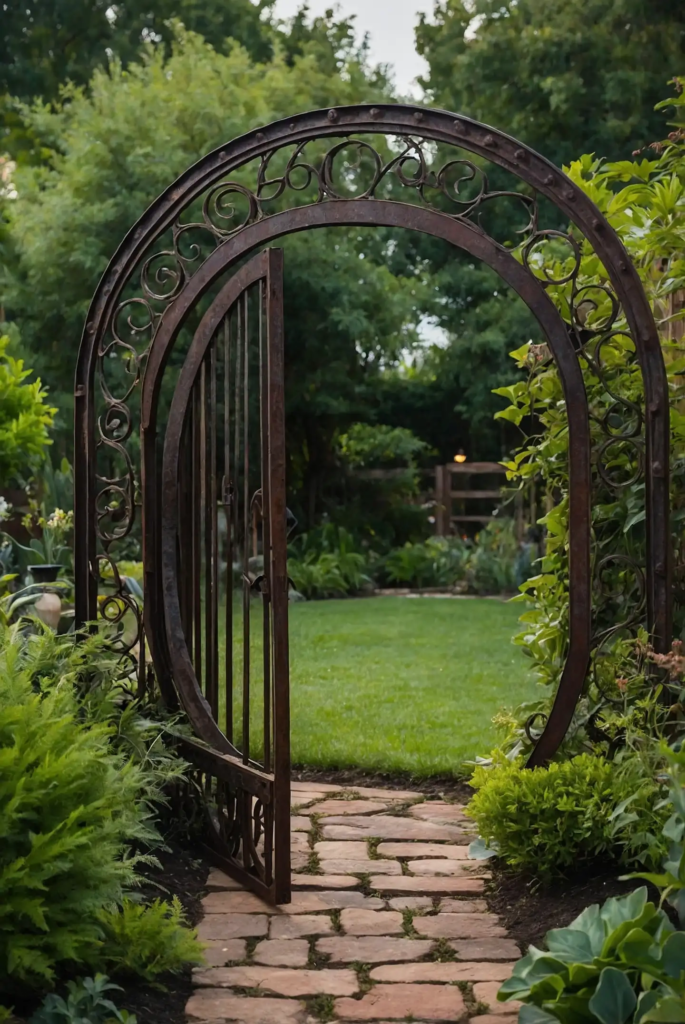
Repurpose industrial salvage like wagon wheels, machinery parts, or custom-bent rebar into a unique circular entrance.
This approach combines sustainability with industrial character.
Clean and seal metal elements to prevent further rusting if desired. Consider how the negative space creates framed views through your garden.
This upcycled option brings history and narrative to your garden while providing distinctive character impossible to replicate.
8: Stained Glass Insert
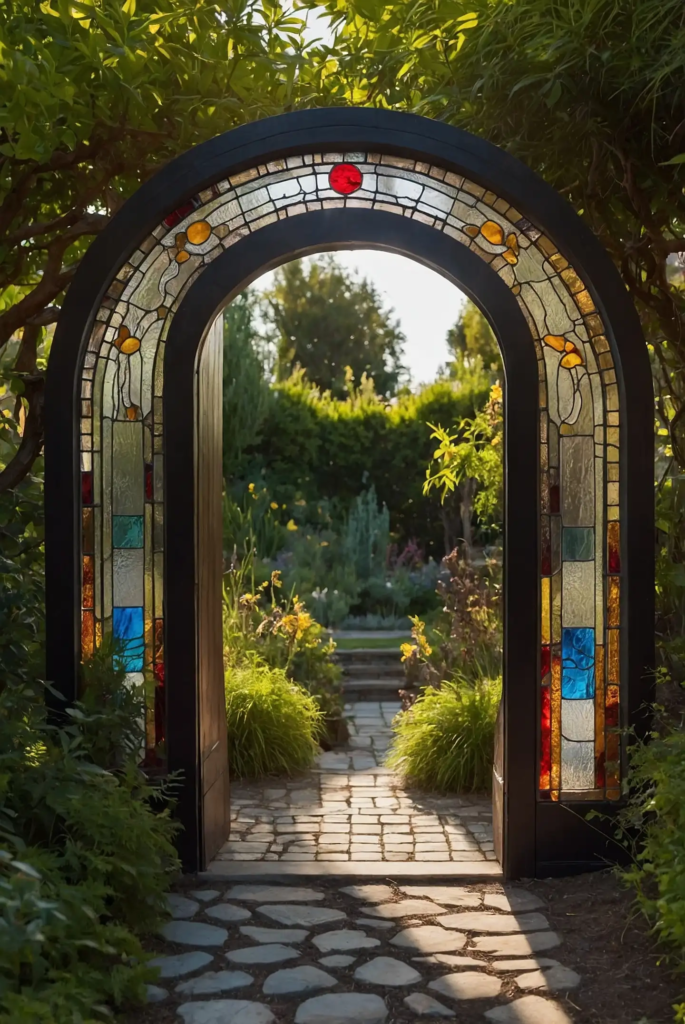
Install a custom stained glass panel within your moon gate structure to create colored light patterns across your garden path.
This artistic approach adds another dimension to your design.
Choose colors that complement your garden palette and theme. Position to catch morning or evening light for the most dramatic effect.
This decorative element transforms throughout the day as the sun moves, creating an ever-changing kaleidoscope of colored light.
9: Woven Branch Circle
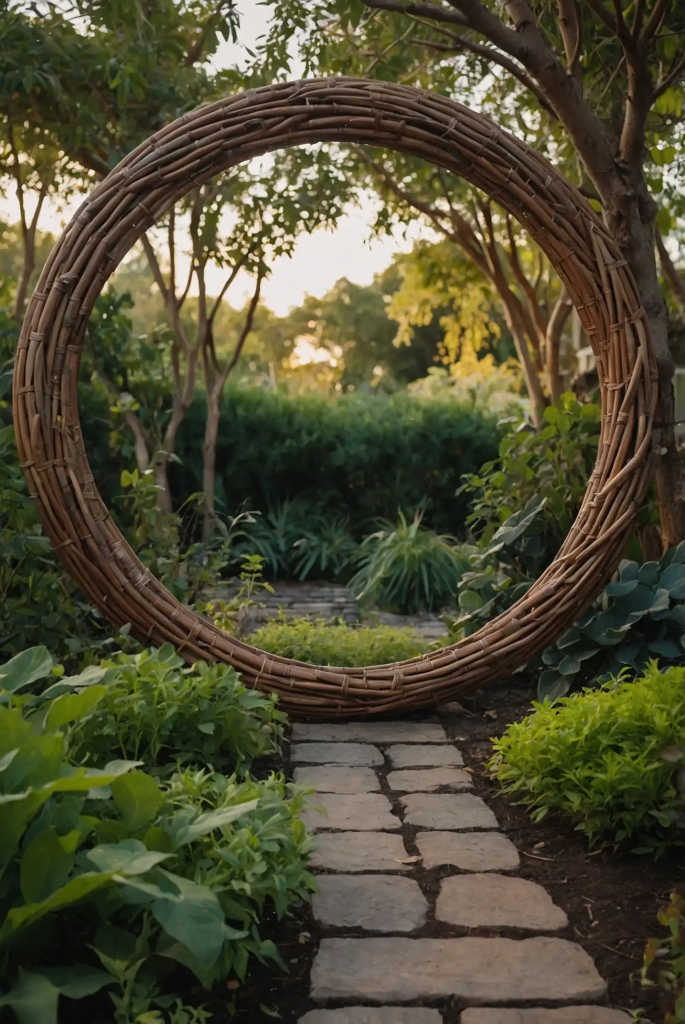
Weave flexible branches like dogwood, willow, or grapevines into a rustic circular framework.
This naturalistic approach works beautifully in cottage and woodland gardens.
Harvest branches during winter pruning for the most flexibility. Create a sturdy framework first, then weave smaller branches through for density.
This handcrafted structure brings organic texture and natural materials into your garden design while referencing ancient crafting techniques.
10: Moonlight-Reflecting Pool
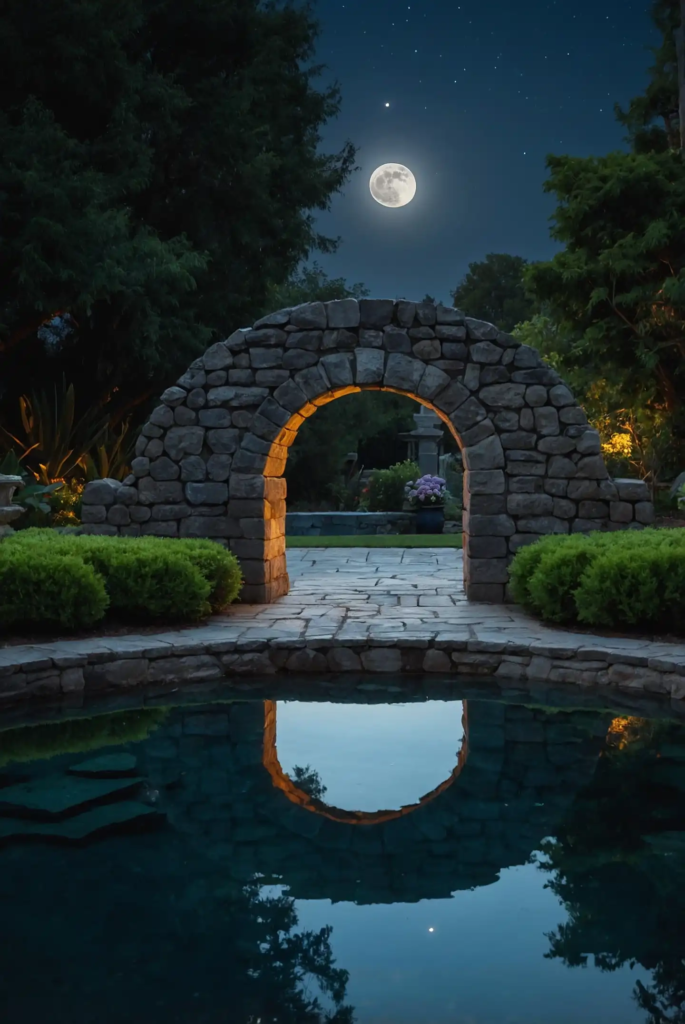
Position a circular moon gate so it reflects perfectly in a still water feature below.
This creates a complete circle through real structure and reflection, doubling its visual impact.
Align the gate precisely above the water for perfect reflection. Consider night lighting to enhance the magical quality after dark.
This contemplative arrangement references traditional Chinese garden design principles while creating meditative viewing opportunities.
11: Stone-Framed Glass Moon
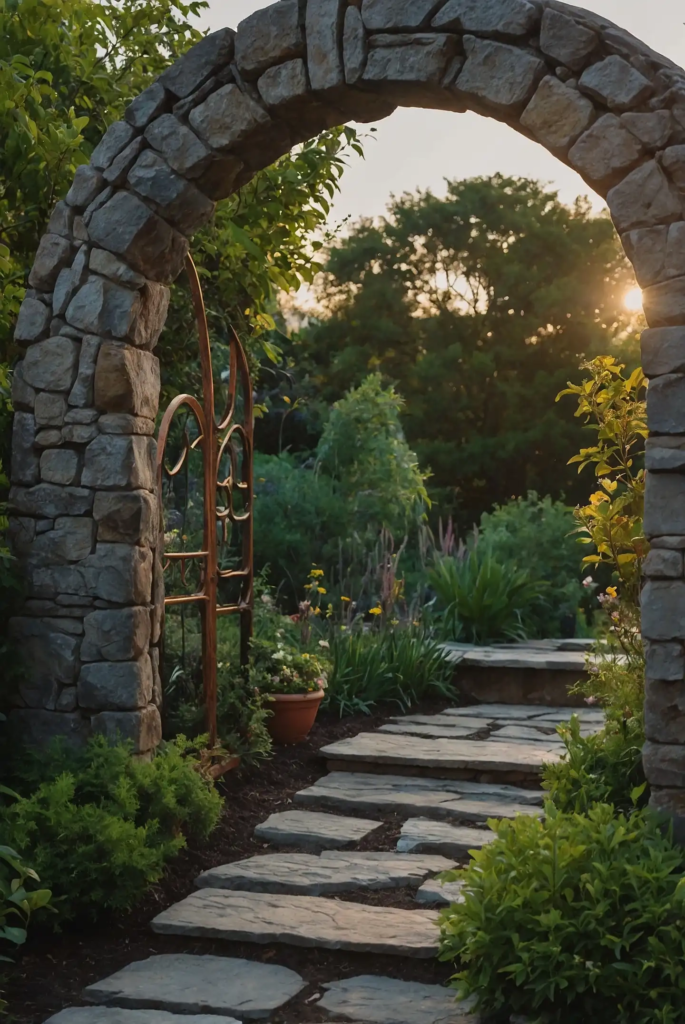
Insert a circular window of clear, frosted, or colored glass within a stone moon gate frame.
This unexpected combination creates intriguing transparency while maintaining structure.
Choose glass appropriate for outdoor installation to prevent breakage. Consider how light will interact with the glass throughout the day.
This hybrid approach combines the permanence of stone with the ethereal quality of glass for a truly distinctive garden feature.
12: Wrought Iron Circular Gate
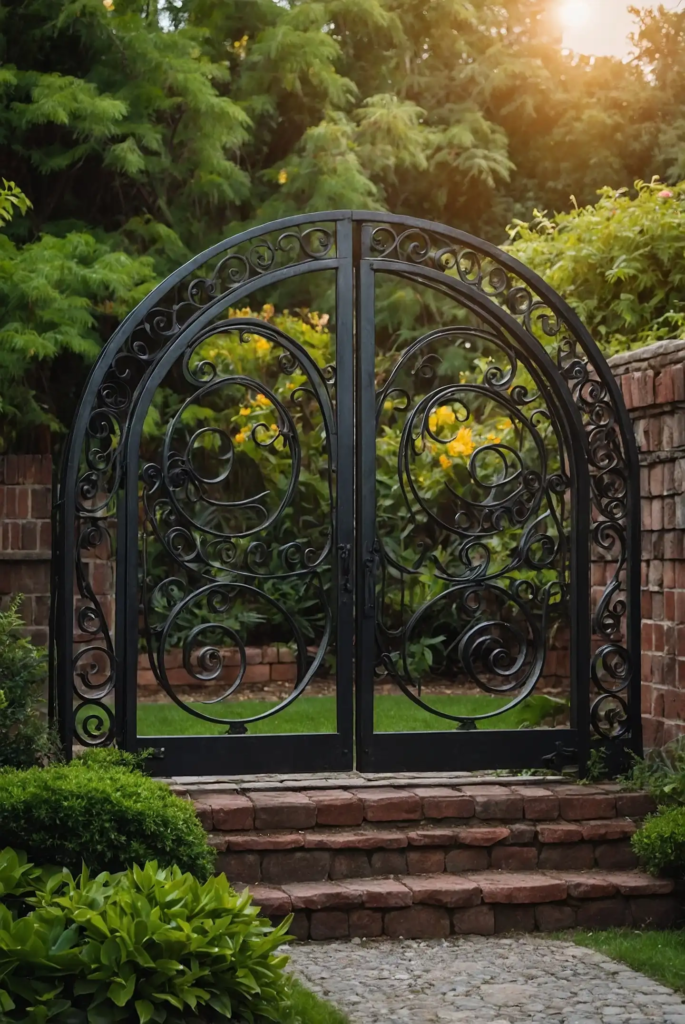
Commission a decorative wrought iron moon gate with scrollwork, botanical motifs, or geometric patterns.
This ornamental approach creates both boundary and beauty.
Incorporate a functioning gate mechanism for practical access control.
Choose a powder-coated finish for longevity or allow natural rusting for character.
This traditional craftsmanship brings artistic metalwork into your garden while providing a secure yet welcoming threshold.
13: Living Succulent Circle

Create a living moon gate using a circular frame packed with soil and planted with colorful, textural succulents.
This botanical sculpture combines architecture with living plants.
Select varieties with contrasting colors, forms, and growth habits. Install irrigation tubing within the structure for easy maintenance.
This drought-tolerant option brings year-round interest while showcasing plants in an unexpected vertical format.
14: Gabion Wire Moon Gate

Construct a circular framework using wire gabion baskets filled with stone, glass, or other materials.
This contemporary approach creates substantial presence with visible interior texture.
Choose fill materials that complement your garden’s color scheme. Consider mixing materials for sections of the circle to create pattern and variation.
This modern interpretation brings industrial materials and techniques into the garden while providing a strong architectural element.
15: Illuminated Night Feature
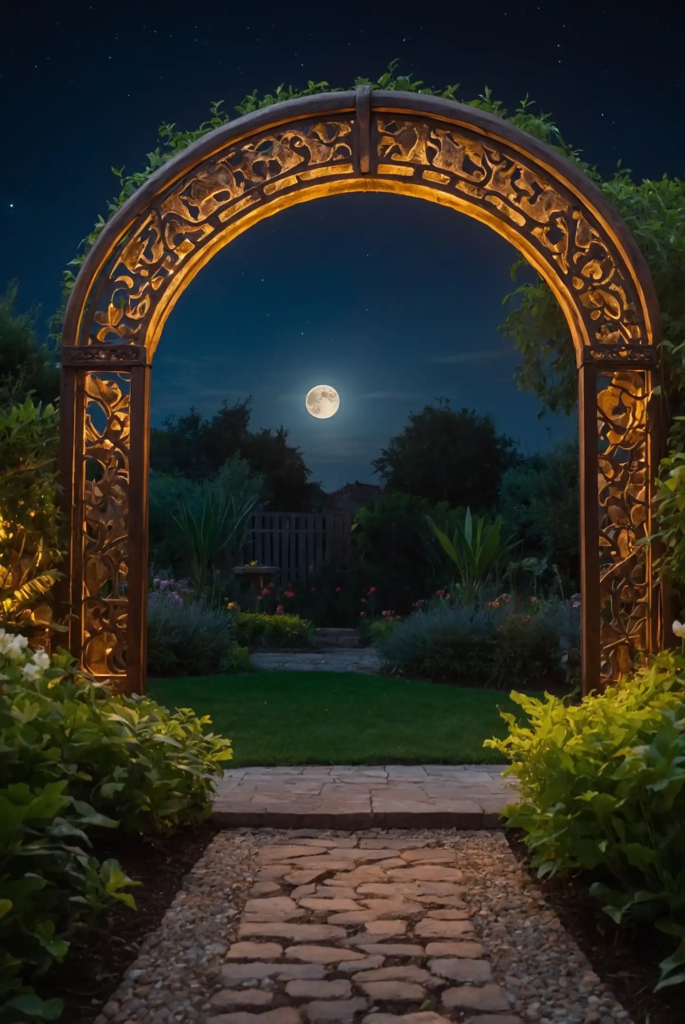
Install subtle LED lighting within or around your moon gate to create a glowing nocturnal focal point.
This lighting approach transforms the structure after sunset.
Choose warm white lights for natural moonlight effect or colored options for dramatic impact. Consider solar-powered options for sustainability and ease of installation.
This enhancement extends your garden enjoyment into evening hours while referencing the moon gate’s celestial namesake.
16: Floating Wooden Rings

Create the illusion of a suspended moon gate by mounting a perfect wooden circle on nearly invisible cables.
This contemporary approach plays with expectations and perception.
Use marine-grade plywood or solid wood sections joined into a circle. Position between trees or posts for structural support with minimal visual impact.
This architectural trompe l’oeil creates visual intrigue while framing views through your garden in unexpected ways.
17: Mirrored Moon Portal
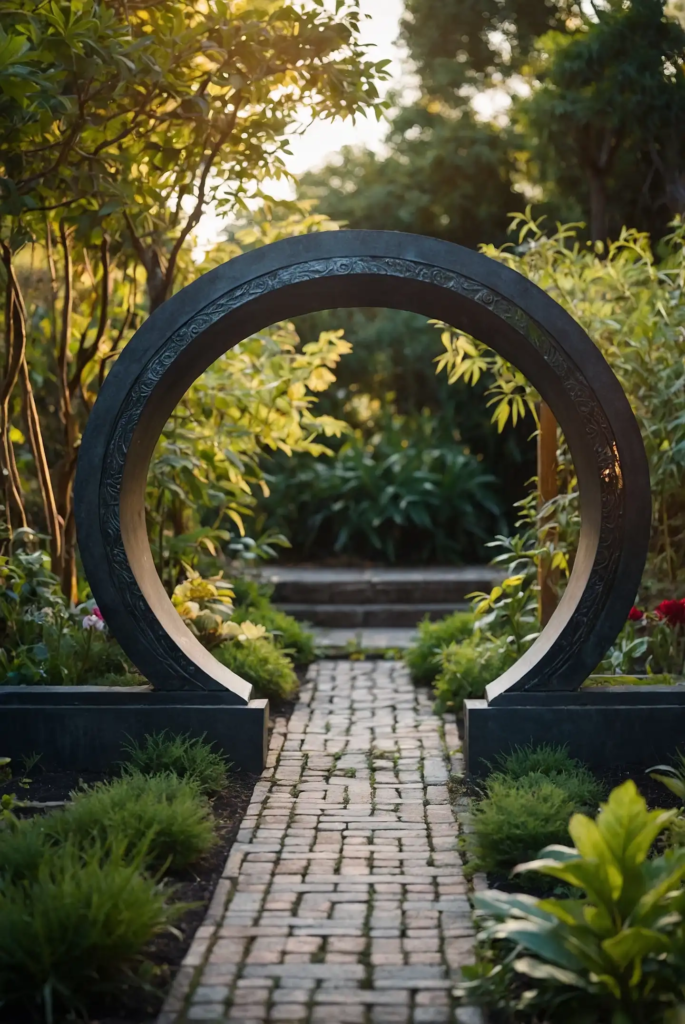
Install a circular outdoor-rated mirror within your moon gate frame to create the illusion of a portal to another world. This reflective element adds depth and mystery.
Position to reflect an especially beautiful garden view or the sky above. Consider safety with shatterproof mirror materials appropriate for garden installation.
This magical addition creates the sense of expanded space while bringing dynamic light reflection into your garden composition.
18: Mirrored Moon Portal
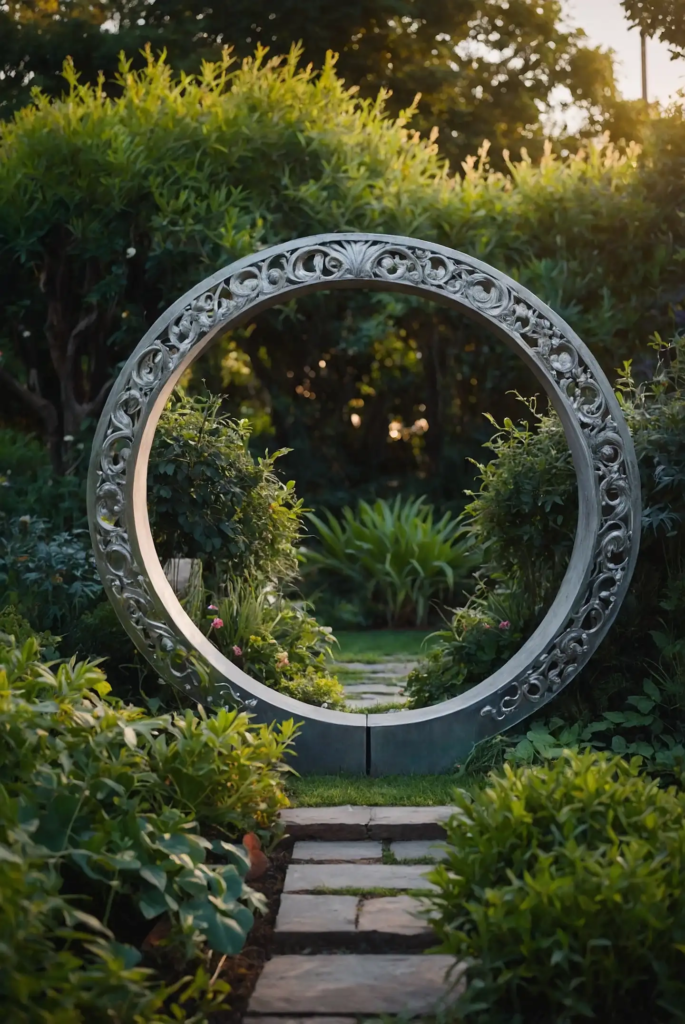
Construct two intersecting moon gates to create a figure-eight formation with shared central stonework.
This advanced design creates multiple framed views and passage options.
Ensure structural integrity where the circles meet with proper engineering. Consider how plantings will enhance each circular opening.
This complex arrangement creates a more sophisticated garden journey with multiple threshold experiences and viewing opportunities.
19: Espalier Fruit Tree Circle
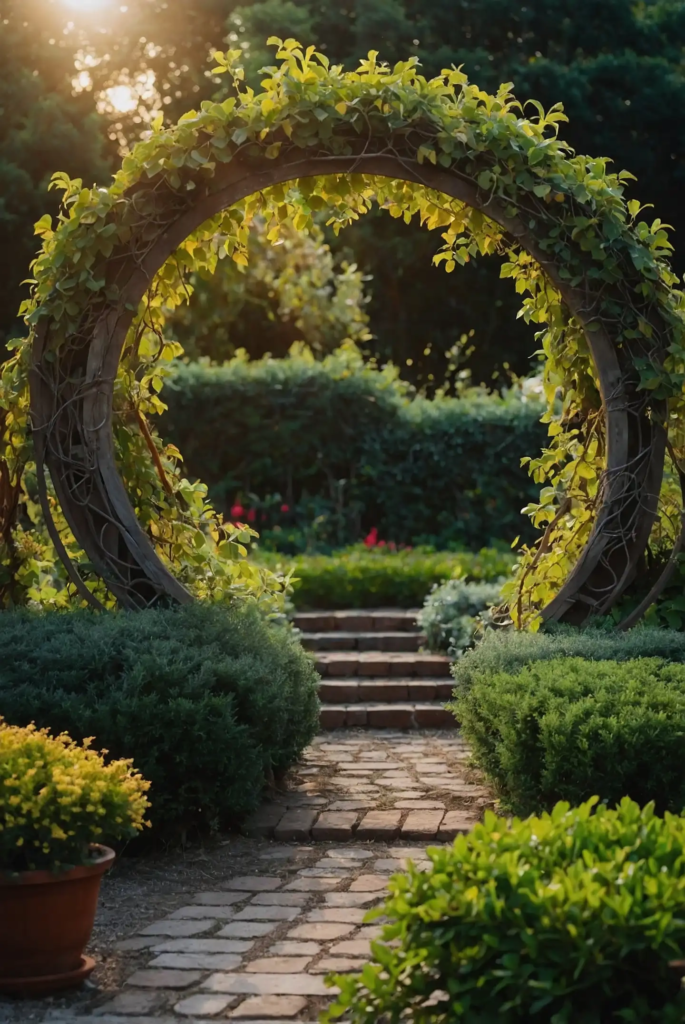
Train apple, pear, or quince branches into a living circular structure through careful pruning and support. This productive moon gate combines ornamental form with edible harvest.
Select dwarf or semi-dwarf varieties for easier training. Establish a strong support structure initially to guide growth into the perfect circle.
This edible architecture brings seasonal progression from spring blossoms to summer fruit, creating a moon gate that engages all the senses.
20: Driftwood Sculptural Circle
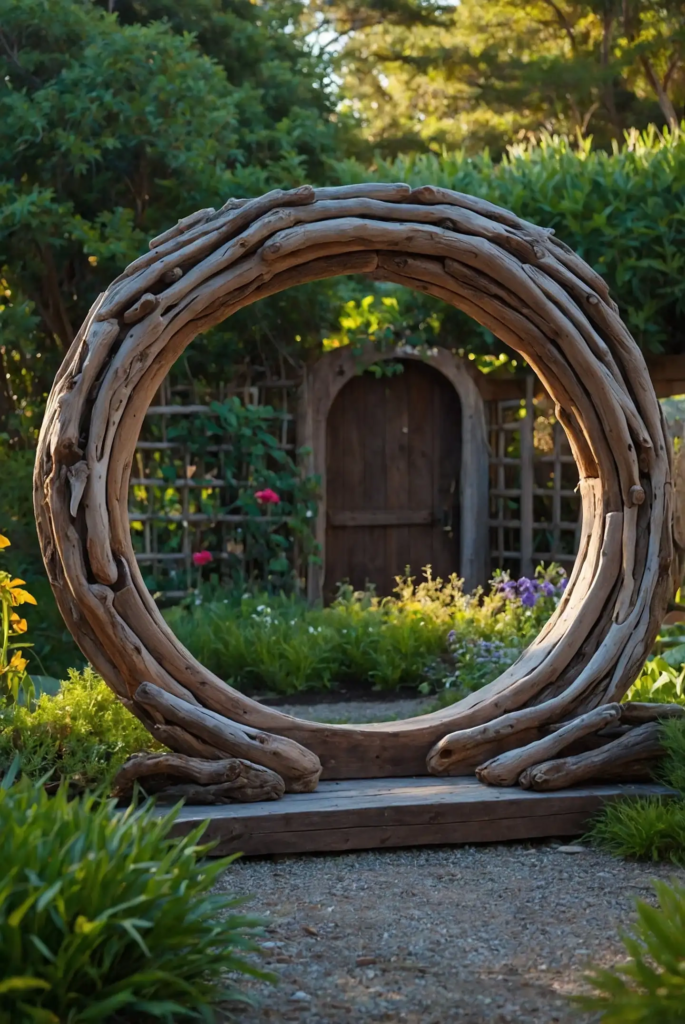
Assemble weathered driftwood pieces into a circular formation, securing them to create a textural, organic moon gate. This natural approach brings coastal elements inland.
Select pieces with interesting shapes, textures, and silvery patina. Create a hidden structural framework to support the arrangement securely.
This artistic interpretation connects your garden to water elements and natural processes through reclaimed materials with their own history.
21: Circular Stone Seat Wall
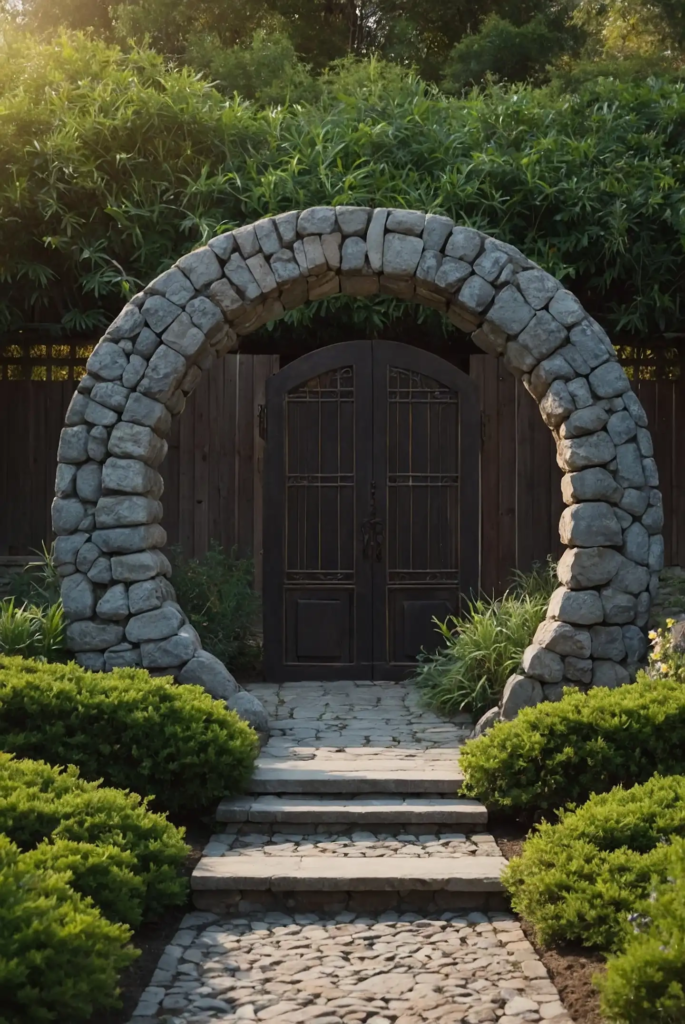
Create a moon gate large enough to incorporate seating within its circular structure. This functional approach combines passage, viewing frame, and resting place.
Design comfortable seating height and depth on the interior curve. Consider how both the passageway and seating orientation frame garden views.
This multifunctional element invites lingering and contemplation while maintaining the symbolic threshold between garden spaces.
22: Ceramic Tile Mosaic Ring
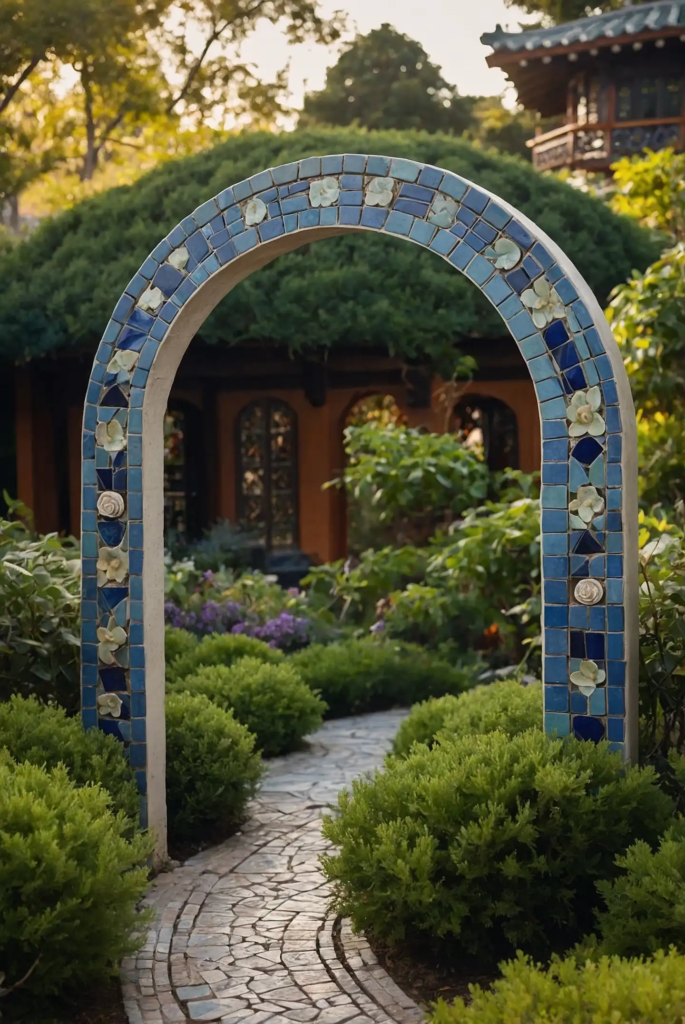
Adorn your moon gate structure with handmade or colorful ceramic tiles in a mosaic pattern. This decorative approach adds color, pattern, and artistic expression.
Choose frost-proof tiles suitable for outdoor installation. Create a pattern that complements your garden style—geometric, floral, or abstract.
This personalized enhancement brings permanent color and artistry to your garden while creating a distinctly Mediterranean or Spanish colonial character.
23: Bent Copper Pipe Formation
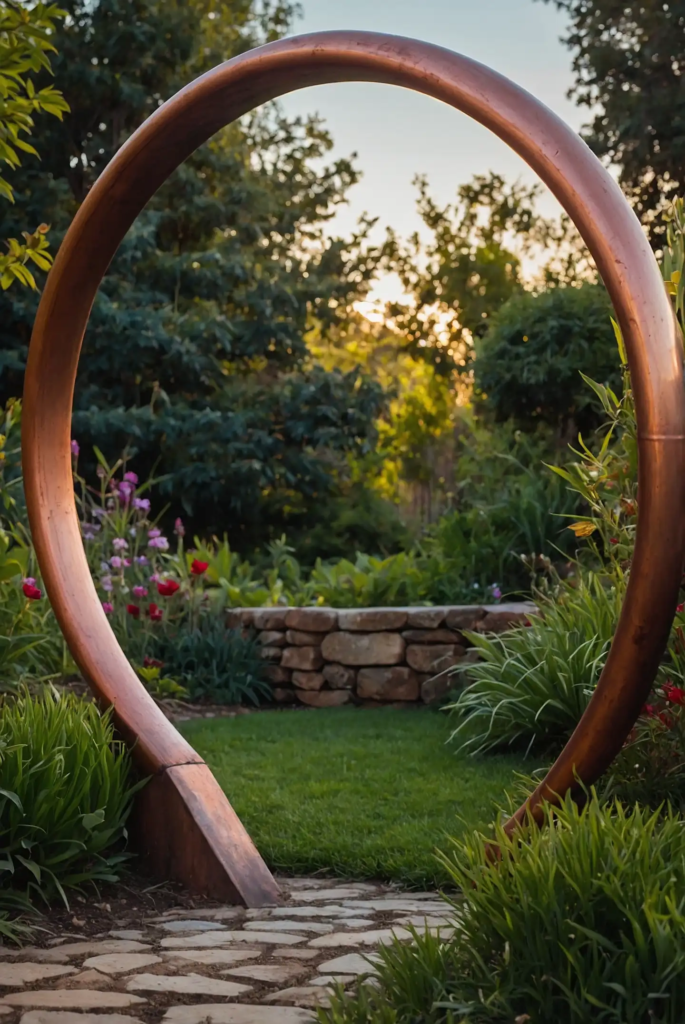
Form soft copper piping into a perfect circle, allowing it to develop a natural verdigris patina over time.
This material brings warm metallic tones that transition to blue-green.
Use substantial diameter pipe for visual weight and structural integrity. Consider incorporating multiple rings of different diameters for added complexity.
This evolving finish changes dramatically over seasons and years, developing rich character that complements garden plantings.
24: Symbolic Zodiac Elements

Incorporate astrological symbols, moon phases, or celestial patterns into your moon gate design. This thematic approach emphasizes the cosmic connections of the circular form.
Include representations through metalwork, carving, or inlaid materials. Consider aligning specific elements with astronomical events like solstices.
This meaningful enhancement connects your garden structure to ancient traditions of observing and honoring celestial cycles.
25: Circular Topiary Feature
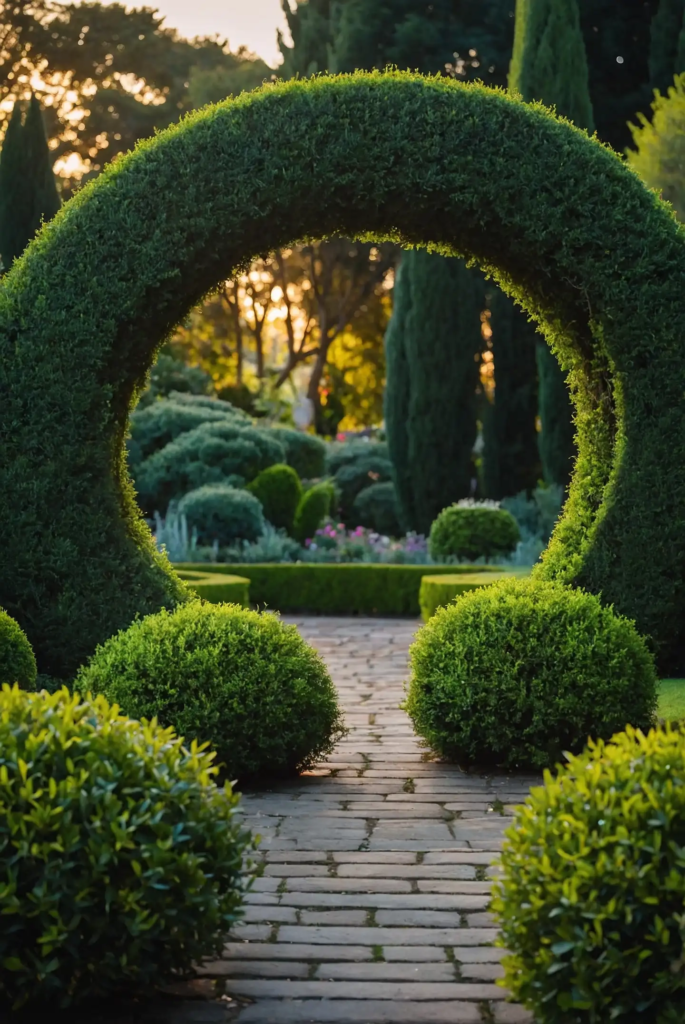
Train evergreen plants like boxwood, yew, or privet into a living wall with a perfect circular opening.
This horticultural approach combines architecture with precise gardening.
Allow several years for the plants to fill in completely. Maintain with regular shearing to keep the circular opening precisely defined.
This green alternative requires patience but creates a seamless integration between structural elements and living plants.
26: Ancient Stone Reclamation
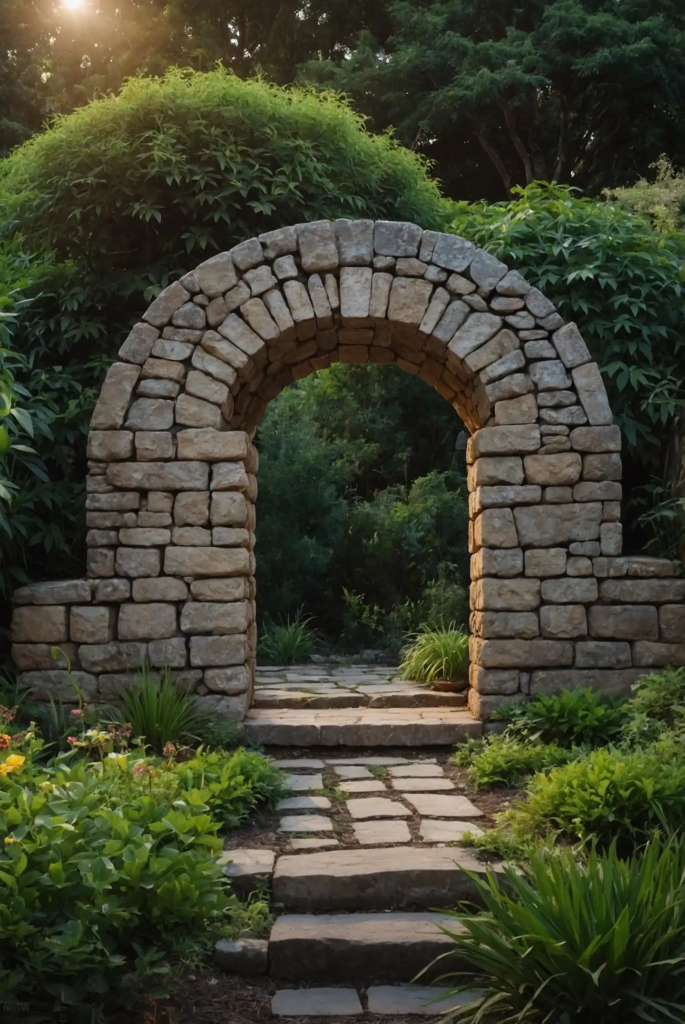
Incorporate actual antique stone elements from architectural salvage into a moon gate design. This approach brings authentic history and patina into your garden.
Source materials from reputable architectural salvage dealers. Design your structure to showcase the unique character of the historical elements.
This historically rich option connects your garden to architectural traditions while giving new life to materials with their own stories.
27: Seasonal Flower Circle

Construct a moon gate with built-in planting pockets to showcase changing seasonal blooms throughout its circular form.
This dynamic approach creates an ever-changing living picture frame.
Install hidden irrigation for easy maintenance. Plan a succession of flowering plants for continuous color through growing seasons.
This horticultural highlight brings your moon gate to life with changing colors and textures throughout the year.
28: Split Stone Megalith
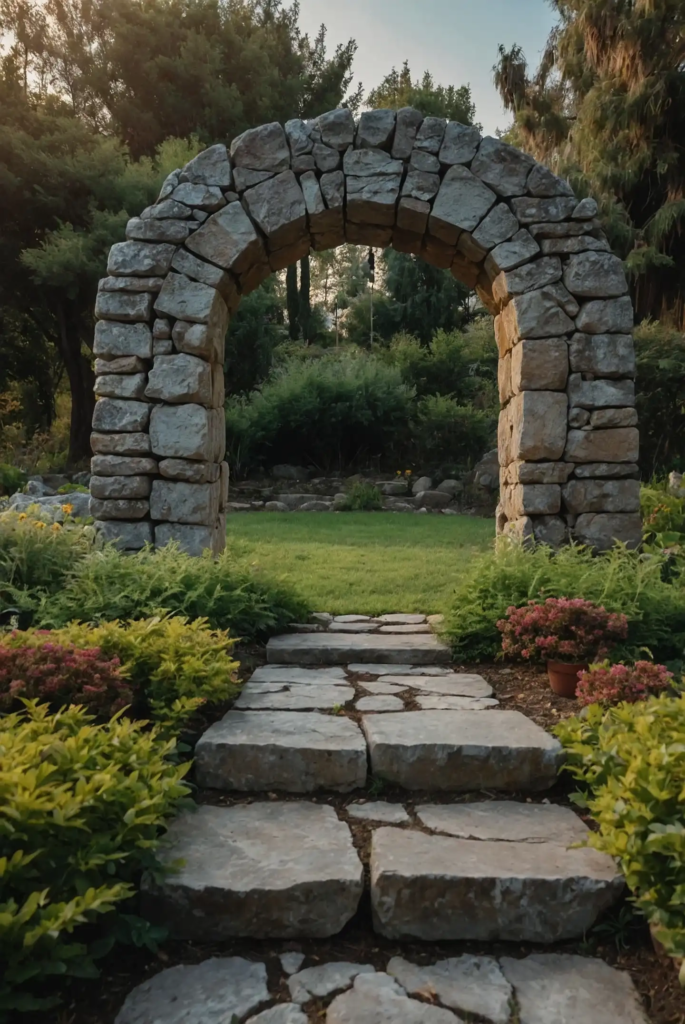
Create a primitive-looking moon gate by splitting a large stone slab to form a circular opening. This technique suggests ancient standing stones and prehistoric monuments.
Work with stone suppliers to find appropriate materials for this specialized technique. Consider the orientation to frame specific garden views or celestial events.
This primal approach connects your garden to ancient traditions of stone circles and megalithic monuments.
29: Coastal Dune Fence Style

Construct a moon gate using traditional dune fencing materials—slender wooden slats connected with wire.
This architectural reference brings seaside character to inland gardens.
Weather the wood naturally or stain to complement your color scheme. Consider allowing beach grasses or coastal plants to partially envelop the structure.
This regional reference creates immediate association with coastal landscapes while using humble, accessible materials.
30: Butterfly Sanctuary Portal

Design your moon gate with specific plants and features to attract and support butterflies, creating a living, moving display around your circular opening.
Incorporate butterfly host and nectar plants near the structure. Consider adding small water sources and mineral stations within the design.
This ecological approach transforms your moon gate into wildlife habitat while adding the magic of butterfly movement and color.
31: Four-Season Framework

Design your moon gate with features that highlight each season—spring blooming vines, summer flowers, fall foliage plants, and winter structure.
This thoughtful approach ensures year-round interest.
Select plants and materials specifically for their seasonal peak periods. Create a supporting structure that looks beautiful even in winter dormancy.
This comprehensive design consideration ensures your moon gate remains a focal point throughout the entire year.
32: Repurposed Agricultural Elements

Transform old wagon wheels, farm equipment, or industrial machinery into a circular garden entrance.
This upcycled approach brings agricultural heritage into your landscape.
Clean and stabilize rusty elements to prevent staining on pathways. Embrace the authentic patina and wear that tells the objects’ history.
This repurposed approach gives new life to discarded items while creating visual connections to rural and farming traditions.
33: Contrasting Material Combination
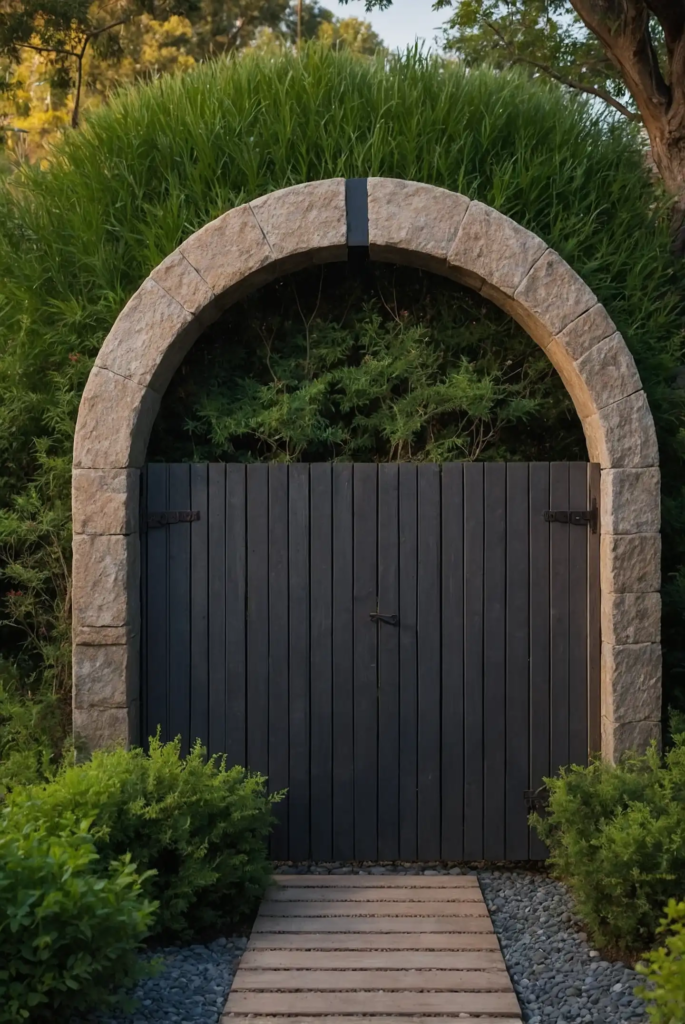
Construct a moon gate using deliberately contrasting materials—such as sleek metal with rough stone or polished concrete with rustic wood.
This design approach creates dynamic visual tension.
Position contrasting materials to highlight their different qualities. Consider how the materials will weather differently over time.
This contemporary approach brings sophisticated design principles into the garden through thoughtful material juxtaposition.
34: Child-Scaled Magical Portal

Create a smaller moon gate specifically sized for children, establishing a special garden entrance just for young visitors.
This whimsical approach delights younger garden explorers.
Design at a height comfortable for children to pass through. Consider adding special elements visible only at child height.
This thoughtful inclusion makes children feel specially welcomed while creating magical garden memories that will last a lifetime.
35: Circular Brick Archway

Construct a moon gate using traditional brick masonry techniques for timeless appeal and structural longevity.
This classic approach complements many architectural styles.
Choose brick colors that coordinate with existing structures. Consider special patterns or insets within the circular form for added character.
This traditional building method creates a permanent garden structure that will develop beautiful patina and character over decades.
Conclusion
A moon gate transforms your garden from ordinary to extraordinary, creating magical transitions between spaces.
Whether traditional or contemporary, your circular portal will invite exploration while adding symbolic meaning and visual delight to your outdoor sanctuary.

